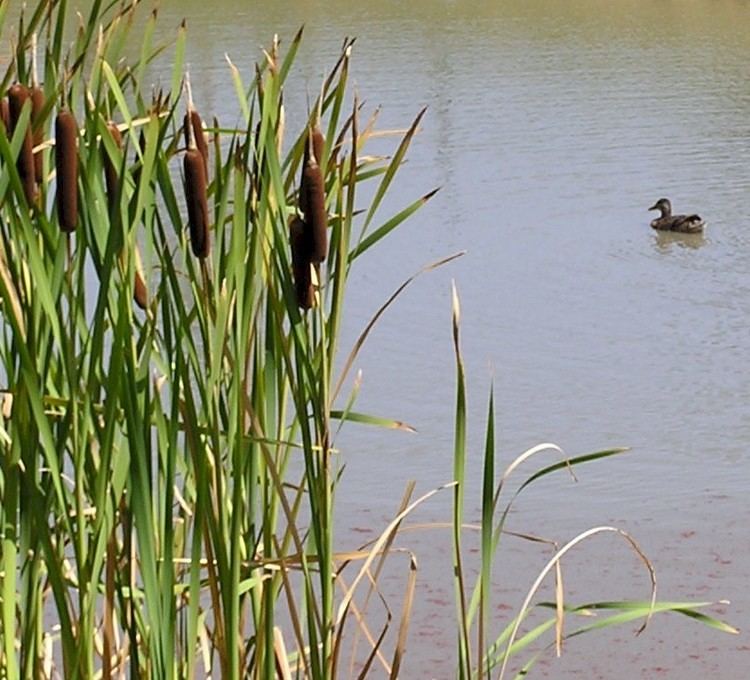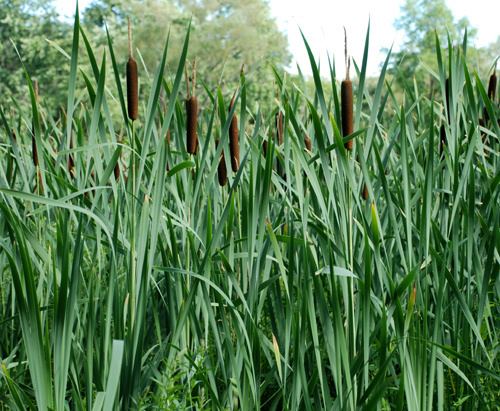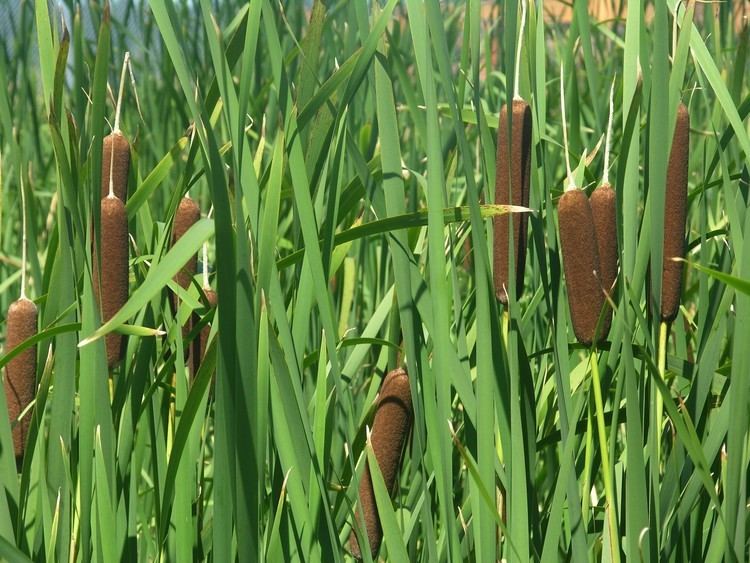Rank Species | Higher classification Cattail | |
 | ||
Similar Cattail, Typha angustifolia, Typhaceae, Scirpus, Common reed | ||
Cattail typha bullrush cattails typha latifolia how to grow cattails
Typha latifolia (broadleaf cattail, bulrush, common bulrush, common cattail, great reedmace, cooper's reed, cumbungi) is a perennial herbaceous plant in the genus Typha. It is found as a native plant species in North and South America, Europe, Eurasia, and Africa. In Canada, broadleaf cattail occurs in all provinces and also in the Yukon and Northwest Territories, and in the United States, it is native to all states except Hawaii. It is an introduced and invasive species, and considered a noxious weed, in Australia and Hawaii. It is not native but has been reported in Indonesia, Malaysia, New Zealand, Papua New Guinea, and the Philippines.
Contents
- Cattail typha bullrush cattails typha latifolia how to grow cattails
- Survival food cattail typha latifolia
- Uses
- References

Typha latifolia has been found in a variety of climates, including tropical, subtropical, southern and northern temperate, humid coastal, and dry continental. It is found at elevations from sea level to 7,500 feet (2,300 m).

Typha latifolia is an "obligate wetland" species, meaning that it is always found in or near water. The species generally grows in flooded areas where the water depth does not exceed 2.6 feet (0.8 meters). However, it has also been reported growing in floating mats in slightly deeper water. T. latifolia grows mostly in fresh water but also occurs in slightly brackish marshes. The species can displace other species native to salt marshes upon reduction in salinity. Under such conditions the plant may be considered invasive, since it interferes with preservation of the salt marsh habitat.

Typha latifolia shares its range with other related species, and hybridizes with Typha angustifolia, narrow-leaf cattail, to form Typha × glauca (Typha angustifolia × T. latifolia), white cattail. Common cattail is usually found in shallower water than narrow-leaf cattail.

The plant is 1.5 to 3 metres (5 to 10 feet) high and it has 2–4 cm (¾ to 1½ inch) broad leaves, and will generally grow out in to 0.75 to 1 metre (2 to 3 feet) of water depth.
Typha latifolia is called totora, espadaña común, tule espidilla, or piriope in Spanish; roseau des étangs in French; tifa or mazzasorda in Italian, and tabua-larga in Portuguese.
Survival food cattail typha latifolia
Uses
Traditionally, Typha latifolia has been a part of many native North American cultures, as a source of food, medicine, and for other uses. The rhizomes are edible after cooking and removing the skin, while peeled stems and leaf bases can be eaten raw, or cooked. Young flower spikes are edible as well. Some cultures make use of the roots of T. latifolia as a poultice for boils, burns, or wounds. The Hopi Kachinas give the plant to children with toys attached, such as bows and dolls during the Home Dance.
While Typha latifolia grows all over, including in rural areas, it is not advisable to eat specimens deriving from polluted water as it absorbs pollutants and in fact is used as a bioremediator. Specimens with a very bitter or spicy taste should not be eaten.
